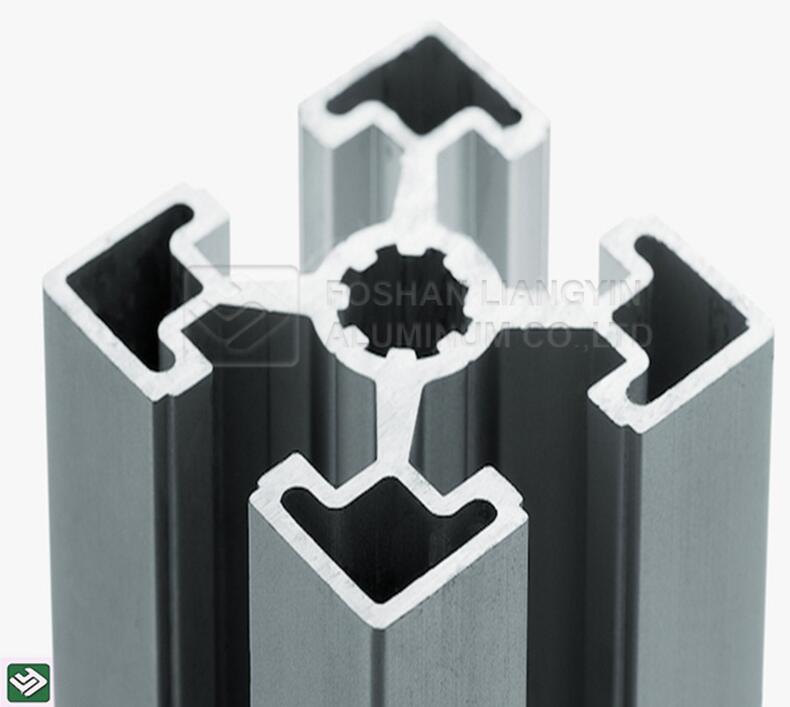Aluminum is a very common specified material used for extrusions and formed profiles that can be made into long, narrow, flexible and adaptable pieces for architectural trim applications and accents, interior and exterior lighting, and engineering design. The use of aluminum trim pieces stems from the many positive properties of aluminum; these include its resistance to rust and corrosion and its low density.
Extrusion has proven to be the most efficient and effective method of producing aluminum trim, as it is both economical and provides immediate results. Aluminum's high ductility means that the metal can be easily formed into a variety of cross-sections without the need to expend a lot of energy in the tooling or forming process, and aluminum also typically has a melting point that is about half that of ordinary steel. These two facts mean that the aluminum extrusion process has a relatively low energy footprint, which translates into lower tooling and manufacturing costs. Finally, aluminum also has a high strength-to-weight ratio, making it an excellent choice for industrial applications. Many profiles of aluminum trim offer excellent tolerances, exceptional dimensions, and precisely meet the requirements of product design.

The process typically used to produce aluminum trim is extrusion, which is one of the most reliable methods for producing high-quality products with excellent durability and appearance. It is a continuous manufacturing process that involves forcing a flexible material through a profile or die to form the shape of the desired product; it can be done cold or hot.
Of the many products produced by extrusion, aluminum trim is the easiest to form. A slender trim is extruded from the extruder and the trim is cut to the desired size before being packaged for shipping. In some cases, depending on the profile, the final product may require finishing.
The aluminum trim extrusion process begins with a billet, an intermediate casting designed and produced for further processing. Billet is made from a variety of metals, most commonly aluminum; billets are cast from ingots. The aluminum families used to produce billets are 6061 and 6063.
The key factor in the production of aluminum trim is the shape of the profile or mold, which is made of machined steel. Molds for aluminum trim are readily available from the manufacturer's stock, but designers can design special and unusual profiles.
To prepare the billet for the extrusion process, it is preheated to make it pliable and ductile. Blanks are prepared by heating them to 800° F (426° C). The heating makes the blanks ductile but not molten. Essentially, the blank is softened so that it can be molded.
The prepared billet is loaded into a cradle and prepared to be pushed into the extruder. The cradle is designed to hold the blank in place prior to processing. Attached to the cradle is a virtual block that contacts the billet and prevents any heated metal from leaking backwards.
The movement of the punch creates pressure in the billet as it is pressed against the die and becomes shorter and wider until it comes into contact with the press wall. To increase the flexibility and life of the die, liquid nitrogen is released around the billet to cool it and prevent the formation of oxides on the extruded shape.
As the aluminum cut edge leaves the die, its temperature is measured to help maintain extrusion speed. Each aluminum alloy, 6063, 6463, 6063A, 6101, 6005A and 6061, has a different exit temperature that must be maintained to ensure the quality of the final product.
As the extrusion passes through the die, it falls onto a runout table which has a puller to guide it onto the table. A series of fans mounted along the length of the table cool the extrusion as it is extruded. When the extrusion reaches the desired length, it is cut or sheared and transferred to the cooling table.
Once the extrusion is sufficiently cooled, it is moved to the stretching machine. The stretching process straightens the extrusion and hardens it. Another benefit of stretching is the release of stress in the metal due to the high pressure and temperature at which it is forced through the extrusion die. Small changes in extrusion dimensions occur during the stretching process.
After the parts have been fully stretched and treated, they are cut to the desired length for shipment. As a final measure to enhance their properties, the cut parts are placed in an aging furnace; this is the recommended process for 6061 aluminum alloy. For some applications, the finished aluminum trim may be treated to improve its appearance and provide it with additional protection.
Previous: The meaning of hot dip galvanizing
Copyright:@2020-2021
Comments Please sign in or sign up to post.
0
0 of 500 characters used